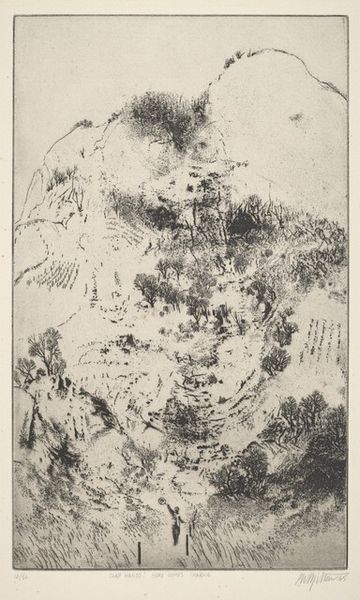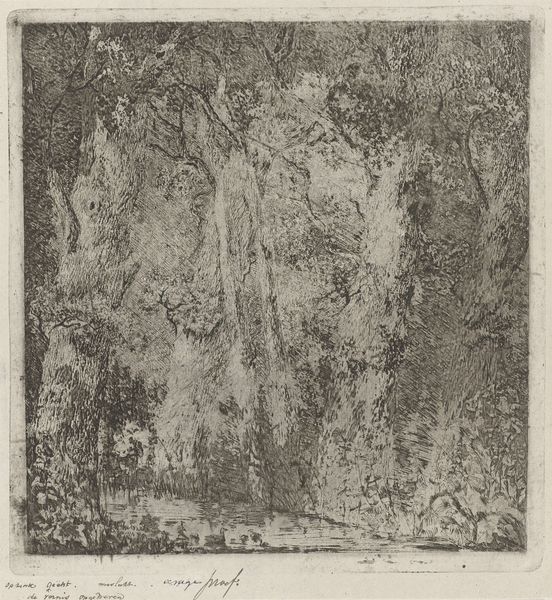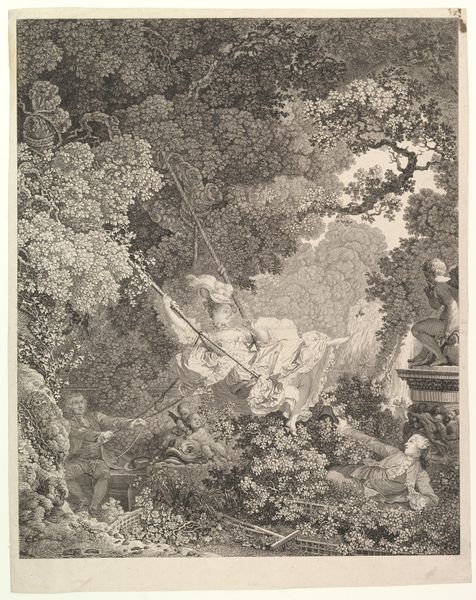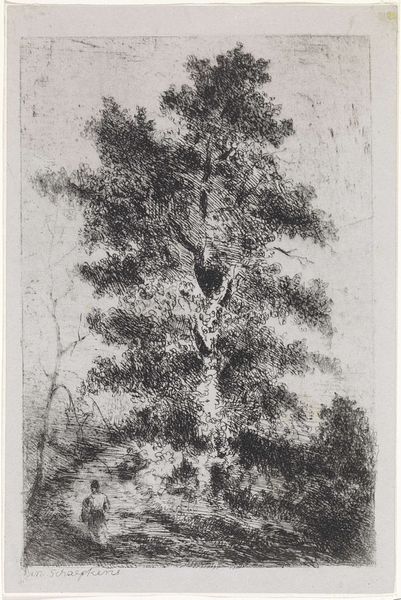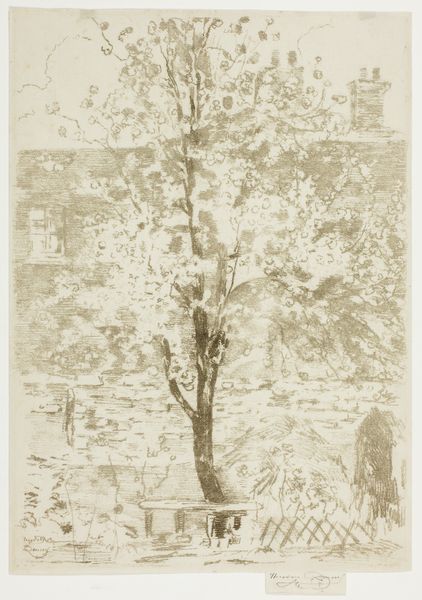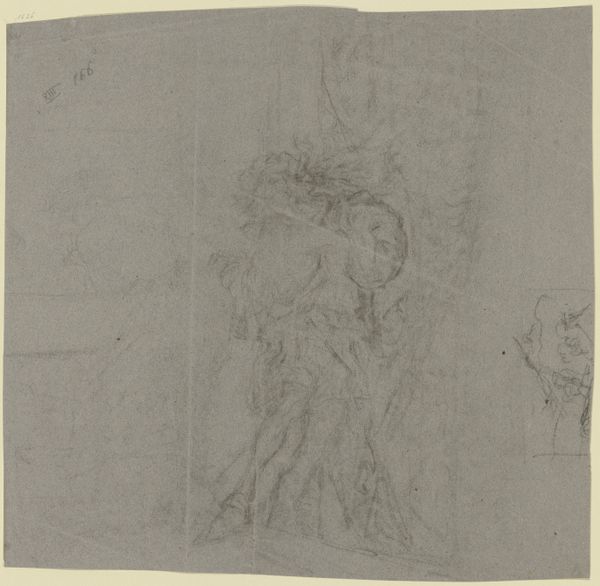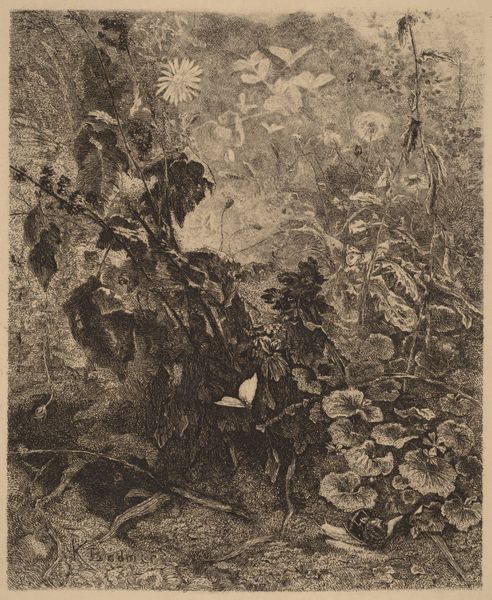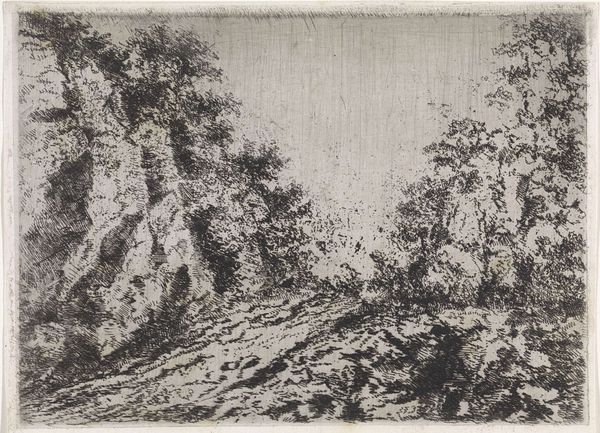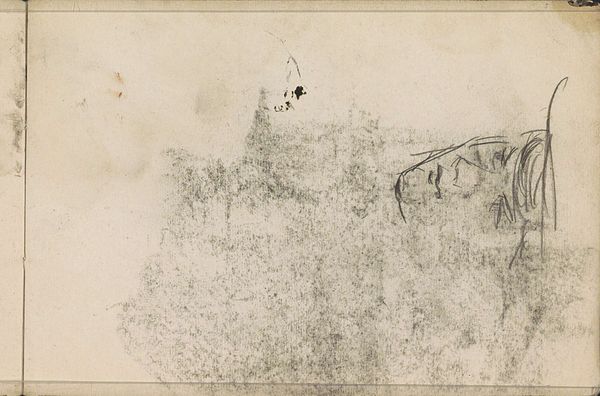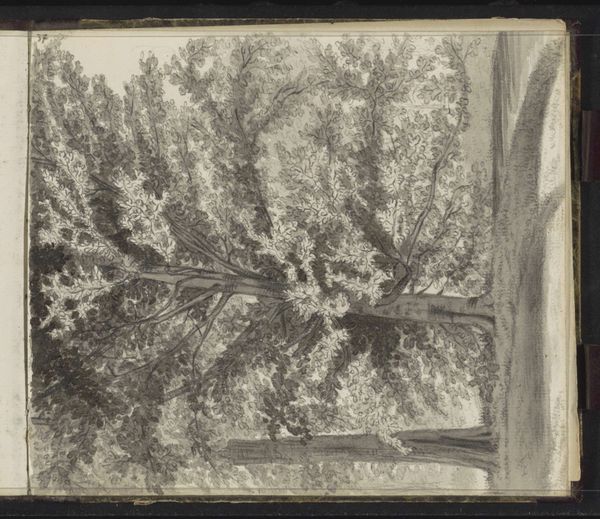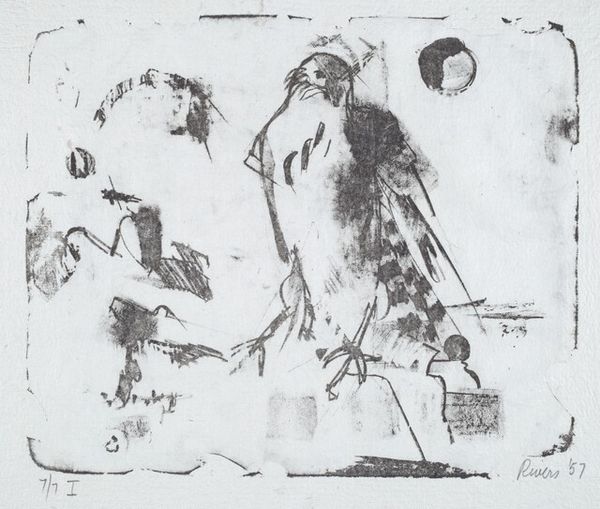
drawing, print, etching, paper, ink
#
drawing
# print
#
etching
#
landscape
#
etching
#
paper
#
ink
Dimensions: height 65 mm, width 84 mm
Copyright: Rijks Museum: Open Domain
Curator: I find this landscape oddly compelling, a blend of sharp detail and ghostly vagueness. Editor: Well, "Studieblad met landschap", or Study Sheet with Landscape, as it's called, is an etching by Hermanus Fock, created sometime between 1781 and 1822. What strikes me immediately is its almost unfinished quality, the way forms seem to emerge and dissolve. It gives off the quality of a memory, fragmented and incomplete. Curator: Exactly. The limited use of materials – just paper and ink, etching on the plate – enhances that effect. You can practically feel the hand of the artist at work, carefully layering the ink. Given the artist’s milieu, the work embodies that transition between artisanal craft and industrial printmaking processes of the time. Do you see any links to historical or societal factors at work? Editor: Absolutely. The printmaking world, especially in the Netherlands, was experiencing a rise in the art market. Etchings like these were not only studies, as the name implies, but also affordable artworks that found their way into middle-class homes, creating a new kind of art consumer and changing the role of landscape imagery itself. Look at the figures—almost laborers in the lower corner. It depicts not a pastoral dream, but a common scene made desirable by this emerging marketplace. Curator: That is an intriguing insight. It highlights the commercial realities influencing artistic choices. But let's also consider the technique itself. The etching lines, in varying depths, add textures. How does this choice of material contribute to the narrative beyond just the image portrayed? Editor: The material makes this piece more widely accessible while imbuing it with the ‘authenticity’ that makes it valuable. The image becomes part of a larger economic system – shaping how land and leisure, previously the domain of the wealthy, are now democratized. It gives new consumers a sense of belonging and connection to their world. Curator: A connection carefully manufactured, it seems. But this lens you use makes it more about a reflection of social aspirations and a commercial strategy. Editor: Perhaps. I find that interplay more insightful than simply seeking beauty in a landscape. I wonder what we are doing today that is like that, a democratized aesthetic that hides economic structures. Curator: A sobering thought. Now I'm seeing not just trees and fields, but a glimpse into a transforming society and my participation in a continuous echo. Editor: Indeed. I find it is impossible to simply stand passively before art as an art consumer, without contemplating the forces that make art accessible, but also at a price.
Comments
No comments
Be the first to comment and join the conversation on the ultimate creative platform.
